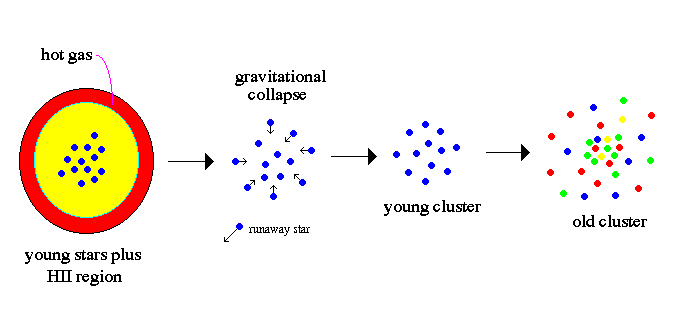
|
Star Clusters:
| Readings: Schneider & Arny: Units 62, 63, 69 |
| (Audio Lecture) |
When stars are born they develop from large clouds of molecular gas. This means that they form in groups or clusters, since molecular clouds are composed of hundreds of solar masses of material. After the remnant gas is heated and blow away, the stars collect together by gravity. During the exchange of energy between the stars, some stars reach escape velocity from the protocluster and become runaway stars. The rest become gravitationally bound, meaning they will exist as collection orbiting each other forever.

When a cluster is young, the brightest members are O, B and A stars. Young clusters in our Galaxy are called open clusters due to their loose appearance. They usually contain between 100 and 1,000 members. One example is the Jewel Box cluster below:
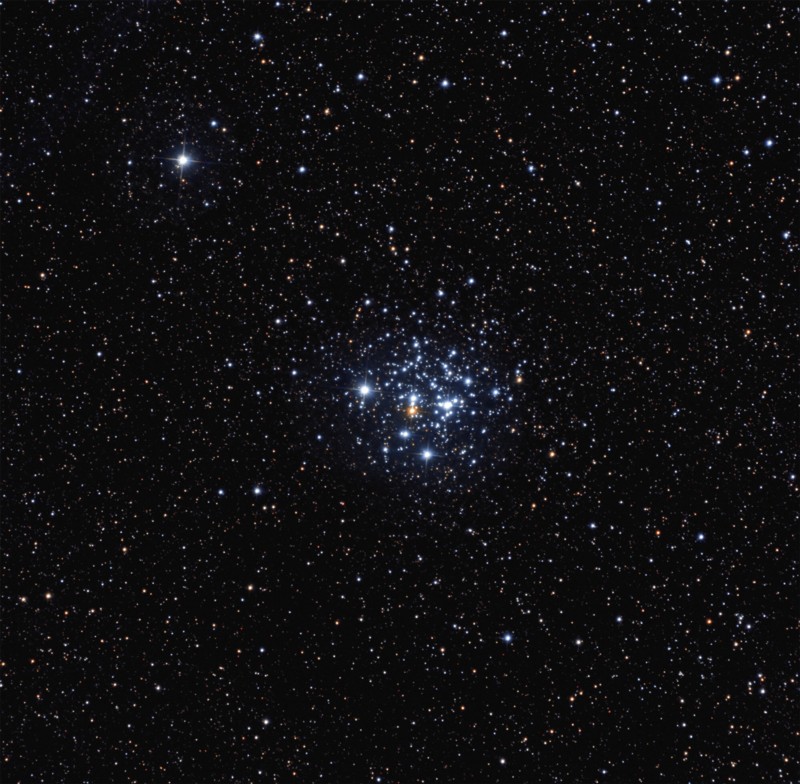
Early in the formation of our Galaxy, very large, globular clusters formed from giant molecular clouds. Each contain over 10,000 members, appear very compact and have the oldest stars in the Universe. One example is M13 (the 13th object in the Messier catalog) shown below:
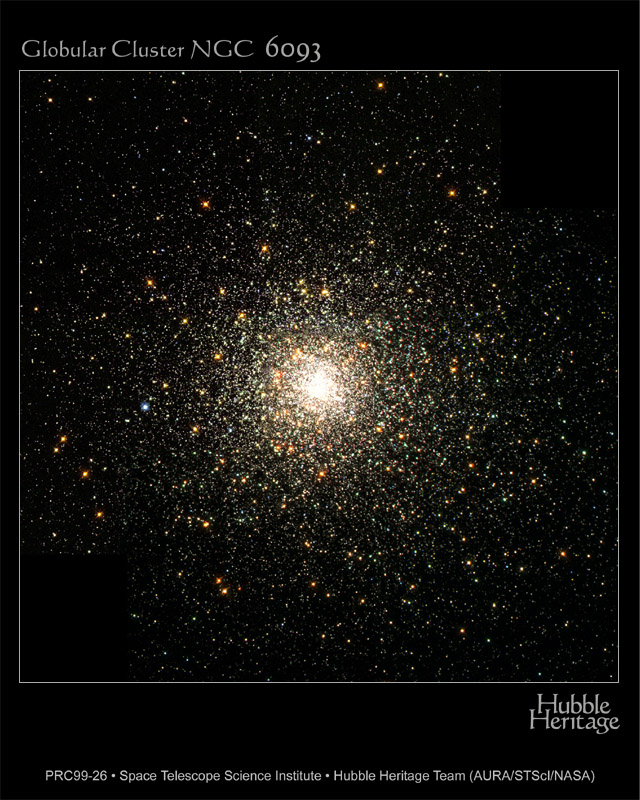
Cluster HR Diagrams:
Since all the stars in a cluster formed at the same time, they are all the same age. A very young cluster will have a HR diagram with a cluster of T-Tauri stars evolving towards the main sequence. As time passes the most massive stars at the top of the main sequence evolve into red giants. Therefore, the older the cluster, the fewer stars to be found at the top of the main sequence, and an obvious grouping of red giants will be seen at the top right of the HR diagram.
This effect, of an evolving HR diagram with age, becomes a powerful test of our stellar evolution models. A computer model can be built that follows the changes in stars of various masses with time. Then an theoretical HR diagram can be built at each timestep. Observations of star clusters are compared to these computer generated HR diagrams to test of our understanding of stellar physics.
Observations of star clusters consist of performing photometry on as many individual stars that can be measured in a cluster. Each star is plotted by its color and magnitude on the HR diagram. Shown below is one such diagram for the globular cluster M13.
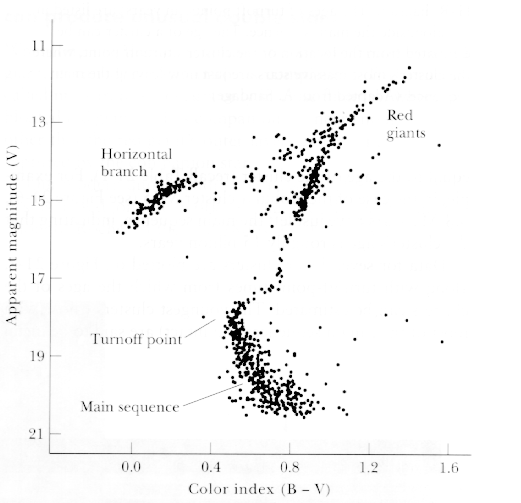
Note that the main sequence only exists for low mass G, K and M stars. All stars bluer than the turn-off point have exhausted their hydrogen fuel and evolved into red giants millions and billions of years ago. Also visible is a clear red giant branch and a post-red giant phase region, the horizontal branch.
Plotting various star cluster HR diagrams together gives the following plot
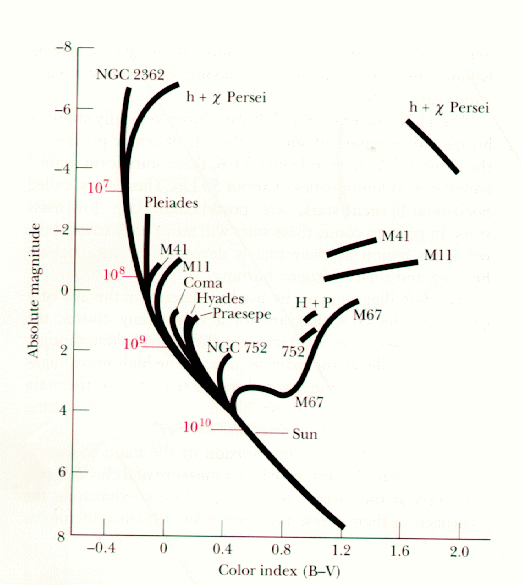
Notice that the fainter the turnoff point, the older the cluster (ages are marked in red along the main sequence).
Understanding the changes in the lifetime of a main sequence star is a simple matter of nuclear physics, where we can calibrate the turn-off points for various clusters to give their ages. This, then, provides a tool to understand how our Galaxy formed, by mapping the positions and characteristics of star clusters with known ages. When this is done it is found that old clusters form a halo around our Galaxy, young clusters are found in the arms of our spiral galaxy near regions of gas and dust.
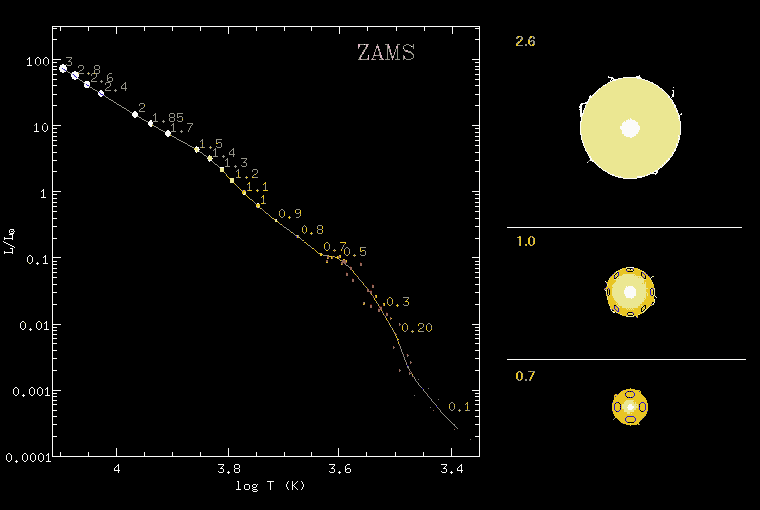
The above animation is a detailed computer simulated HR diagram. The horizontal axis is the log of temperature, the y axis is the luminosity of the stars. The main sequence is the line through the middle of the figure. Notice the stars evolving off the main sequence labeled by their masses in solar masses, the high mass ones first. To the right is a diagram of the interiors of three stars, masses 2.6, 1.0 and 0.7 solar masses. The cutaways shows what is happening inside the stars as they evolve. Notice the enlarging envelopes as the stars become red giants.
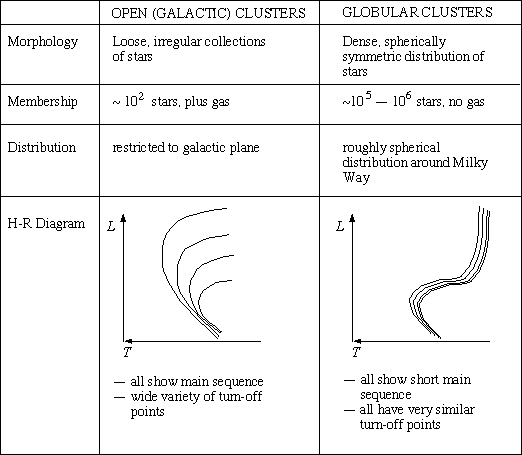
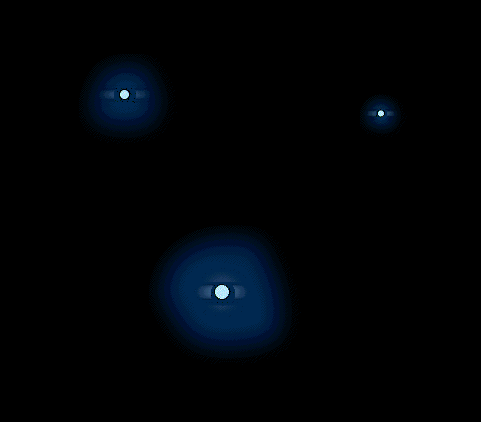
Variable Stars:
Astronomers noticed that there was a gap in the HR diagram of old clusters. Stars, that are rarely found in this gap, were found to vary in their brightness. The gap came to be known as the instability strip, since the stars inside that region appeared unstable. And the stars within the instability strip are known as variable stars.
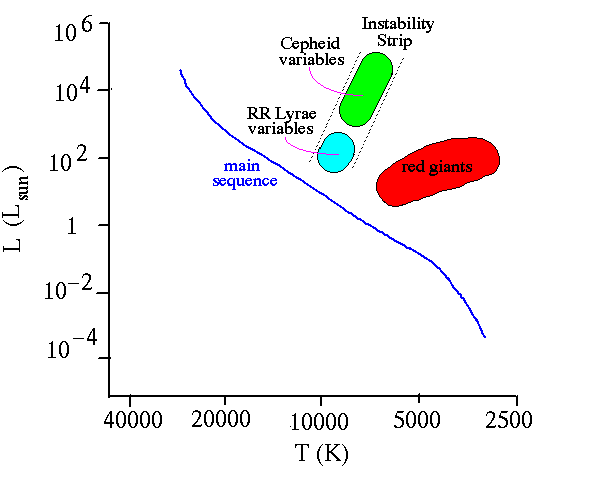
The two most famous types of variable stars are Cepheid variables and RR Lyrae variables. Both these types of stars obey a period-luminosity relationship, meaning that their period of variability corresponds to a unique absolute luminosity.
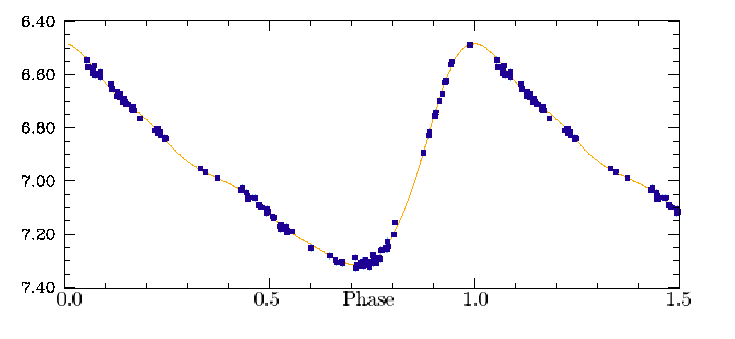
Thus, by knowing the period of star determines its absolute luminosity. The difference between the apparent luminosity and its absolute luminosity is the distance to the star. Measurements of the variable stars in nearby galaxies allows us to determine the distance to those galaxies.
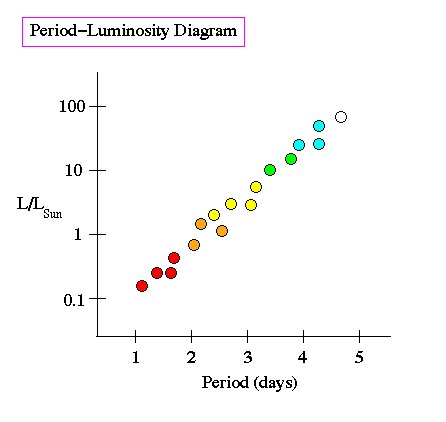
Cepheid's are the brightest variable stars, with luminosities from 1,000 to 100,000 times brighter than the Sun. Cepheids have periods lasting a day to a week from maximum to maximum. RR Lyrae stars are fainter than Cepheids, although still 100 times brighter than the Sun. They have periods from hours to a half a day.
The mechanism behind variable stars is pulsation. In normal stars, the internal pressure balances the force of gravity. However, stars that are evolving undergo sharp changes in their energy outputs. Much like pushing a swing, these changes in energy production puts the structure of the star out of balance. If the pressure exceeds the surface gravity, then the star expands until the pressure decreases to equal the surface gravity (volume goes up, pressure goes down). But the inertia of the outward moving layers carries the surface of the star past the balance point. Now the weight of the layers exceeds the pressure, and the surface drops, again falling past the balance point and the cycle begins again.
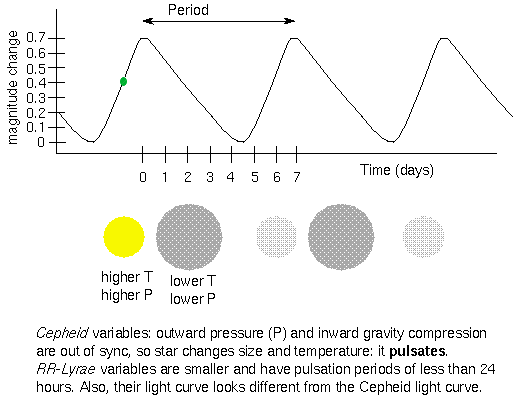
The cycle of pulsations is show below along with the changes in size and temperature of the variable star and the resulting light curve. Notice that the luminosity of the variable star is at a maximum when the size of a star is at a minimum. This is because Stefan-Boltzmann's law tells us that the luminosity is much more dependent on temperature than size.
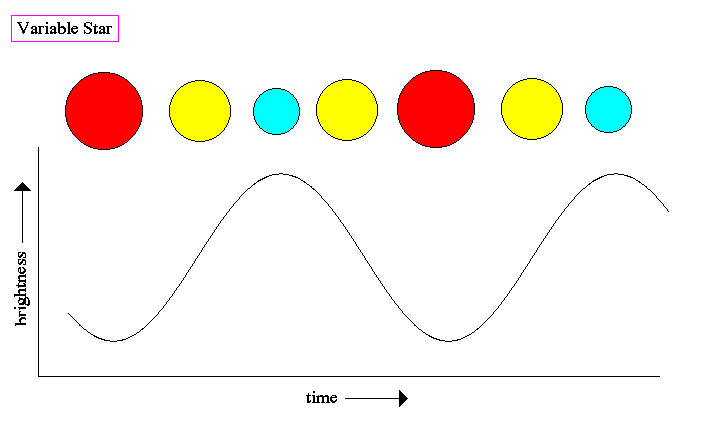
Of course, like a bouncing ball, a variable star should stop pulsating after some time as the energy is radiated away. However, a layer of ionized helium serves as a `valve' to store the energy. When the star contracts, the helium ionizes and stores the gravitational energy.
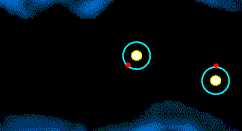
Ionized helium increases the opacity of the layers, which traps heat and the star expands.
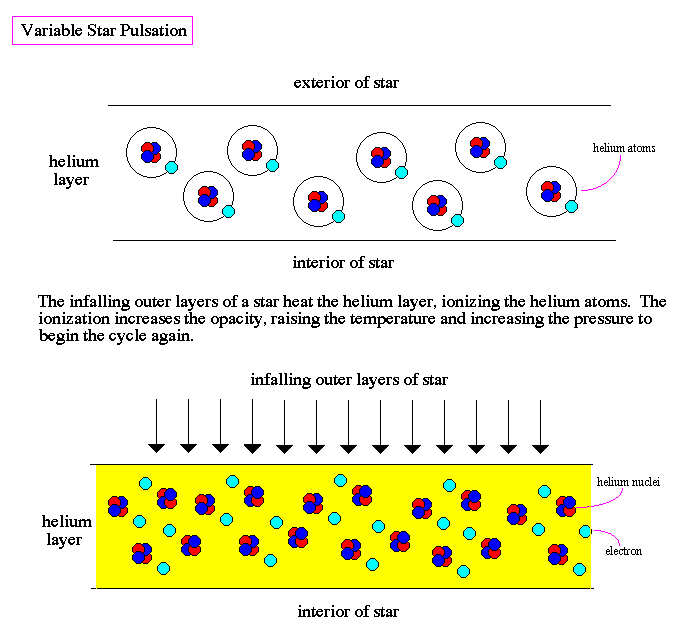

|
|

|